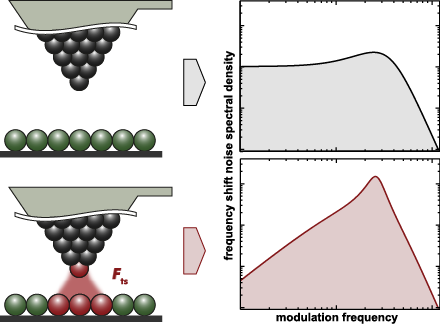Search results
Search for "needle sensor" in Full Text gives 3 result(s) in Beilstein Journal of Nanotechnology.
Noise in NC-AFM measurements with significant tip–sample interaction
Beilstein J. Nanotechnol. 2016, 7, 1885–1904, doi:10.3762/bjnano.7.181

- the sample surface [2], typically a cantilever, a tuning fork, or a needle sensor [8]. The resolution of force measurements is limited by the noise in the frequency shift signal [9][10], which strongly depends on the noise floor of the detection system, the frequency response of the frequency
Structural, optical, opto-thermal and thermal properties of ZnS–PVA nanofluids synthesized through a radiolytic approach
Beilstein J. Nanotechnol. 2015, 6, 529–536, doi:10.3762/bjnano.6.55

- thermal response. This device has 5% accuracy over the 5 to 40 °C temperature range. The device basically contains a single-needle sensor attached to a handheld readout unit. The sensor works as both heat source and thermometer. Technically, a single run experiment took 2 min. For the first 30 seconds
Impact of thermal frequency drift on highest precision force microscopy using quartz-based force sensors at low temperatures
Beilstein J. Nanotechnol. 2014, 5, 407–412, doi:10.3762/bjnano.5.48

- detector noise. Keywords: AFM; frequency drift; length extensional resonator; needle sensor; qPlus sensor; quartz; Findings Frequency modulation atomic force microscopy [1] has become an essential tool for surface scientist‘s to study chemical and magnetic interactions at the atomic scale [2][3][4][5][6
- attractive, with quartz tuning forks (TF) in the “qPlus” configuration (Figure 1c–f) [15] and length extensional resonators (LER) as the so called “needle sensor” (Figure 1a) [16]. Quartz resonators are usually designed and characterized for room temperature applications. Their remarkable frequency stability










![[Graphic 32]](/bjnano/content/inline/2190-4286-7-181-i73.png?max-width=637&scale=1.18182) wit...
wit...

![[Graphic 34]](/bjnano/content/inline/2190-4286-7-181-i75.png?max-width=637&scale=1.18182) wit...
wit...




















